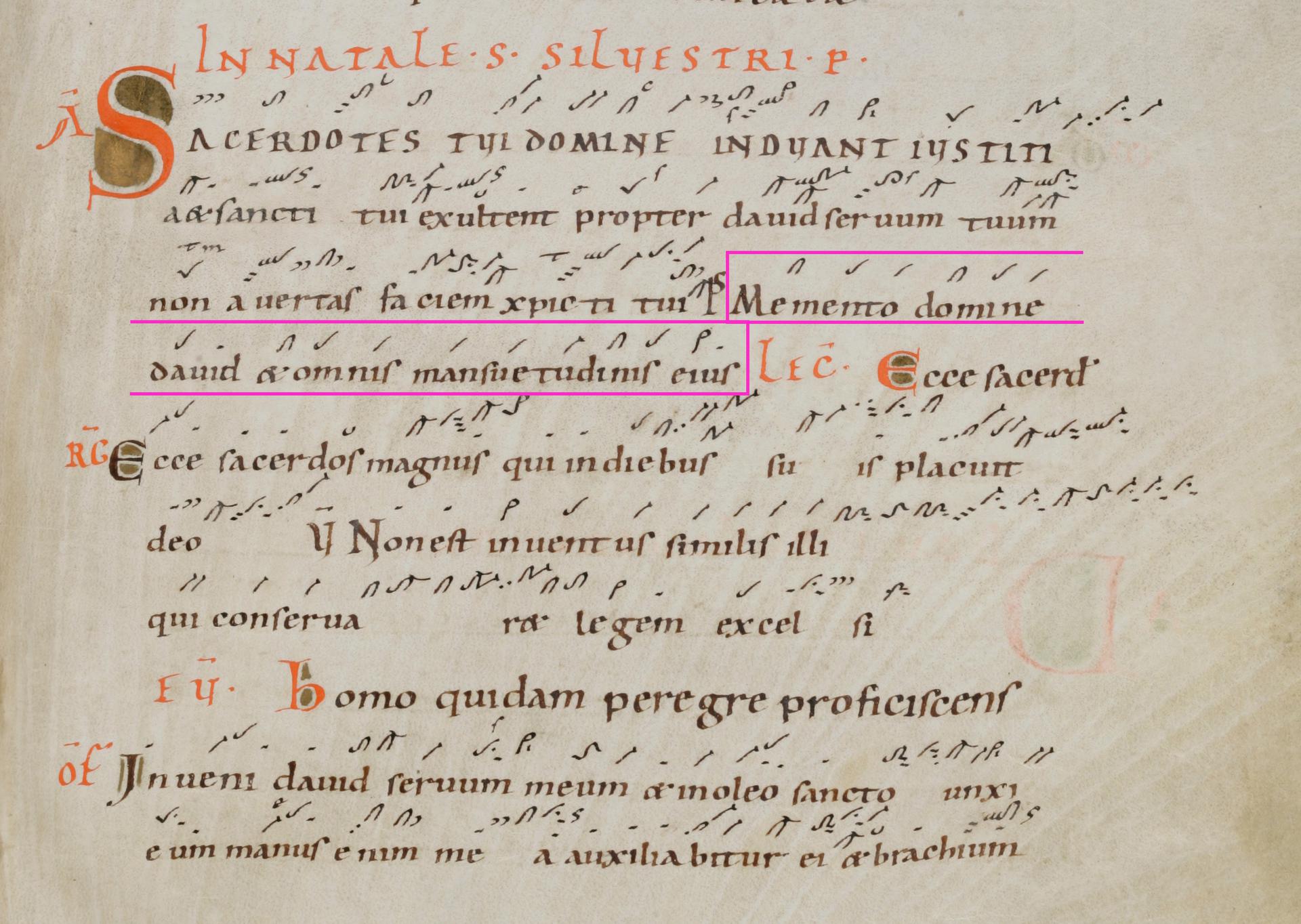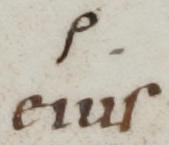NOTATION AS SCRIPT
1.8
Reading and copying
Through this exercise we invite you to familiarise yourself with medieval notation by copying a neumed chant directly from the original source. In this manner you can experience quite directly how neumes were handed down in medieval times.
Below you see a facsimile of a medieval manuscript with the lyrics Memento Domine David et omnis mansuetudinis eius. Above the text you find the neumes with which you became acquainted in the previous step. They indicate the melody.
 A page of a manuscript from the year 980 containing the mass introitus Sacerdotes tui. © St. Gallen, Stiftsbibliothek, Cod. 376 p. 105
A page of a manuscript from the year 980 containing the mass introitus Sacerdotes tui. © St. Gallen, Stiftsbibliothek, Cod. 376 p. 105
www.e-codices.unifr.ch
Click to expand
We invite you to download and print the document you find in the ‘downloads’ section below and copy the neumes into the dotted field. You also have the possibility to compare it to the modern transcription given and to learn how single notes and grouped notes were originally written.
Note: there is one neume that is new if you compare it to the four signs explained in the previous steps. You find it at the last but one position:

It is called a cephalicus and it indicates that the diphthong ‘ei’ of eius is emphasised in a certain way. We will discuss this kind of liquescent neumes in a later step.
License
Copyright: University of Basel
Downloads
